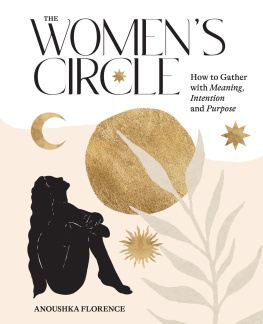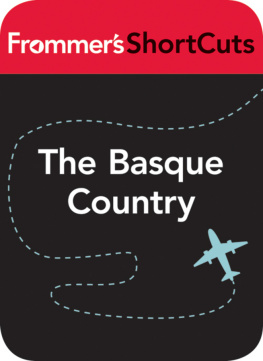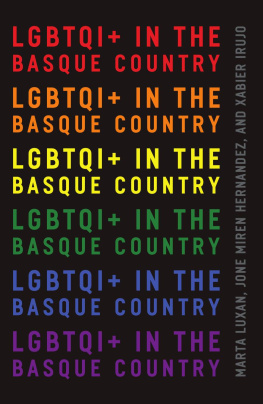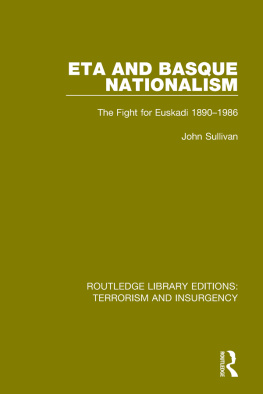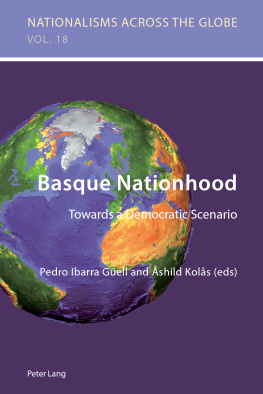THE BASQUE SERIES
For Fee and Pidge
BASQUE SERIES EDITOR : WILLIAM A. DOUGLASS
The Circle of Mountains: A Basque Shepherding Community by Sandra Ott was originally published in the United States by Oxford University Press, New York, in 1981; the University of Nevada Press edition reproduces the original except for the following: a new preface and new afterword by the author have been added, and the frontmatter has been modified to reflect the new publisher.
Library of Congress Cataloging-in-Publication Data
Ott, Sandra.
The circle of mountains : A Basque shepherding community / Sandra Ott.
p. cm. (The Basque series)
Includes bibliographical references.
ISBN 0-87417-224-1
1. Sainte-Engrce (France)Social life and customs. 2. BasquesSocial life and customs. I. Title. II. Series.
DC801.S3636087 1993
944'.79dc20 93-13842
CIP
University of Nevada Press, Reno, Nevada 89557 USA
Copyright 1981, 1993 by Sandra Ott
All rights reserved
Printed in the United States of America
ISBN-13: 978-0-87417-224-9
ISBN-13: 978-0-87417-447-2 (ebook)
PREFACE TO THE NEW EDITION
When I arrived in Sainte-Engrce in 1976, it was still a small, face-to-face community relatively isolated from the outside world. Although tourists visited the commune in increasing numbers during the 1970s, the local people took little interest in them, and contact with other outsiders was minimal. In the upper half of the commune there was only one telephone; and many of the houses did not have roads leading to them.
The 1980s were a decade of change, though the principal institutions and values described in this book survivedtransformed in some instances but intact. In the afterword of this second edition, I explore briefly the ways in which the institutions upon which traditional Sainte-Engrce society was based have changed. I also reconsider the importance of certain ordering principles in the society and consider current contexts in which the fundamental values of reciprocity and cooperation continue to operate.
I have returned annually to Saint-Engrce since 1976, and, since this monograph was first published, have made a documentary film about the people. The film, produced by the British television company Granada and entitles The Basques of Santazi, focusses on continuity and change in the community.
In certain respects I now serve as the local historian for Saint-Engrce, someone whose presence still gives rise to reminiscent conversations among the elderly about practices, such as the ritual giving of blessed bread, which were once of central importance to the society but about which todays children and teenagers know little, if anything.
I have had the pleasure of knowing well a generation of people, most of whom sadly are now deceased, whose pride in their culture and attention to detail allowed me to reconstruct a range of institutionalised activities in this book whose importance might otherwise have gone unrecorded. I have also had the pleasure of knowing a new generation as they grow up and of watching the developmental cycle of Sainte-Engrce households unfold. There is another book to be written.
Finally, I would like to record again my debt of gratitude to the Sainte-Engrce people, in particular to Ambrosi and Louisa, Madgie and Felix, and to Kattalin. I am so glad that Pidge was able to meet them at last and deeply regret that Fee never had the opportunity. My husband, Peter Rivire, is owed another thirteen years worth of thanks for understanding my interest in and love of the Sainte-Engrce Basques.
Rewley House, Oxford
March 1993
PREFACE
I
THE commune of Sainte-Engrce extends along a mountain valley in the south-eastern corner of Soule, one of the three Basque provinces in France. The people of Sainte-Engrce insist, however, that they live not in a valley but in the circle of mountains (bortko ngr). They visualize their community as a circle; but this is not the only reason why the title of this book is appropriate. The same word which the people use to describe the circle of mountains in which they live is applied by them to a diverse range of phenomena which they conceive as making a rotation (ngr bat egiten); for ngr also means rotation, in the sense of the action of moving round a centre or of turning round on an axis (OED). The notion of rotation, in English, as a regular and recurring succession of persons or objects is conveyed by another Basque wordaldikatzia, which denotes what I shall call serial replacement, as well as alternation, in its strictest sense. In Sainte-Engrce, I found that ngr, in the sense of rotation, and aldikatzia are the two fundamental principles which orderin particular but among other thingstwo systems of asymmetric exchange and a range of other institutionalized forms of co-operation.
ngr and aldikatzia have a general importance as organizing notions in Sainte-Engrce societya fact which, I was pleased to discover, many of the people themselves recognize. When I returned to the commune during the summer of 1979 and showed the people the doctoral thesis upon which this book is based, I was asked continually to summarize in Basque the main theme of my book. On one occasion, when I told a couple that my book was about ngr and aldikatzia, the husband looked at me approvingly and exclaimed, Well, in that case youve got it all! If youve understood ngr and aldikatzia, then you understand Sainte-Engrce!
It was, of course, gratifying to have an informant confirm my own views about the importance of these two notions; but I have by no means written a complete ethnographic study of Sainte-Engrce, nor was it my intention to do so. I chose instead to make a selective analysis of certain formally interesting features of the society and thus have focused primarily upon a few main topics that are interrelated. This approach has certain defects. For example, topics such as kinship are touched upon only briefly and raise many questions that I could not answer fully in this book without digressing from my main themes. It is hoped, however, that my approach will be justified by the interest of the institutions that I do explore fully and by the strength of my analyses of them.
Much of this book is concerned, in one way or another, with the concepts of ngr and aldikatzia and with three main institutions in Sainte-Engrce society: the household, first neighbours, and the pastoral institution of the olha. My aims are to show that the same fundamental ideals of co-operation and reciprocity are the essential basis of these three institutions; to describe and to analyse the systems (such as those constituted by the asymmetric exchange of certain ritual goods and services) and the relationships within systems that are ordered by the principles of ngr and aldikatzia; and, finally, to show how the male domain of the mountain herding hut is sociologically, ideologically, and symbolically a re-creation of the female domain of the house in the valley.
The book is divided into six parts. of this book, which is largely concerned with Sainte-Engrce systems of asymmetric exchange.
. One theme is singled out as having a formal importance not only in Sainte-Engrce, but also in certain rural European societies outside the Basque country.
II
My interest in the Basques was initially guided by three factors: first, the Basques are often regarded as the mystery people of Europe; the literature about them is extensive and covers a period of several hundred years; yet surprisingly the Basques have not received the attention they deserve from social anthropologists.


